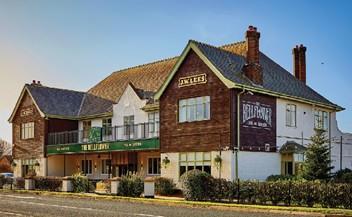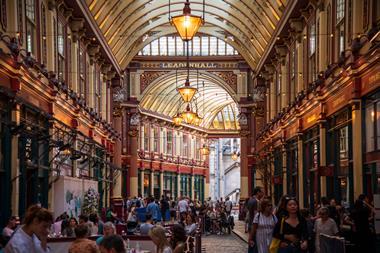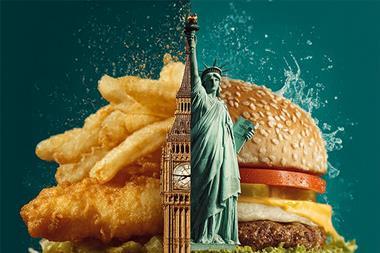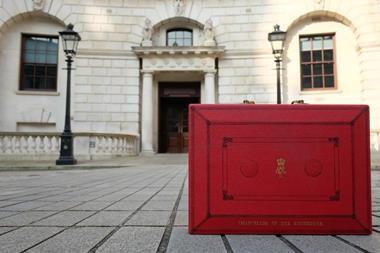One of the most poignant pieces of analysis on the changing face of the UK eating & drinking-out landscape has to be the comparison of the rise and rise of coffee shops over the past 20 years with the contrasting fortunes of the perhaps, no longer quite so great, British pub. Coffee shop numbers have grown by around 220% or 8,800 to reach 12,800 in 2016, whereas pub numbers have fallen by 22% or 13,500 outlets to 47,500. Certainly it is difficult not to connect these divergent growth paths. Divergent histories for sure, but now it appears development strategies are converging as pubs expand more into coffee and coffee shops explore opportunities with alcoholic beverages. Underlying this fight for share of leisure time and wallet is, of course, a greater struggle to win consumers’ hearts and minds, and this has some way to go – for both protagonists.
Discovering the ‘third place’
If we step back for a moment and look at the emerging coffee shop v pub from a more detached perspective, what we are witnessing is a battle for the ‘third place’. It was the American urban sociologist, Ray Oldenburg, who first coined this expression. He identified that, in modern societies, time is primarily spent in isolated first (home) and second (work) places. In contrast, third places offer a neutral public space for a community to connect and establish bonds. These third places play host to the regular, voluntary, informal, and happily anticipated gatherings of individuals beyond the realms of home and work environments. Other academics have highlighted how third places involve the following:
Neutral ground – democratic and status-free
Conversation is the main focus – but not the only activity
Accessible and accommodating – people can come and go
Involve regulars – who set the tone, but newcomers always welcome
Unpretentious – no snobbery or grandiosity
The mood is playful and relaxing – not hostile
A home away from home – comfortable and wholesome qualities
Good food and drink important – but not necessarily, essential
These attributes are important. They provide useful criteria for how the attractiveness of third places might be improved – as well as explaining why certain shortcomings can detract from venue popularity. These attributes are multifaceted, but at their heart, is a sense of shared community values, and developing ways for how a venue can become more valuable for local communities has to be key success secrets.
Pubs ‘are community champions’
At MCA, we recently conducted some research with more than 1,000 consumers asking them for their perspectives on these two competing third places. The survey revealed there was widespread agreement (63%) that pubs are really important in helping build strong local community ties. Only 13% disagreed. Moreover, when asked whether pubs are better than coffee shops in helping to build strong local community ties, 50% were in agreement, compared with just 20% who disagreed. So pub operators, this is an open goal – get behind local community initiatives, support and encourage local interest groups and strengthen events programmes to enhance bonds that bind and drive reasons to visit.
A key tactic being used by both pubs and coffee shops is to try to steal from one another and diversify product offers. Interestingly, when we asked whether coffee shops should sell alcoholic drinks, only 19% agreed, with the majority, 62%, in disagreement. A similar outcome emerged in terms of visit behaviour: 18% felt that would visit coffee shops more frequently if they sold alcohol – while 65% disagreed. These lukewarm findings echo recent comments from Scott Waddington, chief executive of brewer and pub operator, SA Brain, who reported that his coffee chain’s (Coffee#1) experiment with a licensed café offer was not performing well and that there would be no plans to roll the concept out. He felt that people go to coffee shops for a certain experience and alcohol isn’t really part of that.
Interestingly, however, there is far more consumer acceptance of pubs selling coffee. We found that a third of consumers agreed that the coffee sold in pubs is just as good as you get from coffee shops. This compared with 35% who disagreed, but a net disagreement of just 2% surprised us – and tells us that the coffee quality available from pubs is certainly improving and that consumers expect a decent coffee offer to be part of the pub proposition these days.
One area where pubs behind coffee shops is in their attractiveness to solo visitors. Some 44% of consumers said they would never visit a pub on their own – rising to 57% among females. There is still much more to be done to reduce certain gender inequalities and improve perceptions around pubs representing a neutral ground.
Another area where pubs have sought to enhance their appeal is with accommodation. Again, our survey analysis suggests that pubs have the consent of consumers to diversify in this regard as 39% agree that it would be great if more pubs offered accommodation services. This compares with 25% who are in disagreement. As well as providing additional revenue streams, overnight rooms can also be seen as enhancing credentials around ‘a home away from home’ and can help strengthen food and drink sales. Several pubcos, not least Marston’s, M&B and Wetherspoon’s, are looking at accommodation opportunities. Indeed, with 31% of consumers stating they would take more short breaks if more pubs offered rooms, there is the prospect of growing consumer demand when executed well.
Online challenges and chances?
It goes without saying that third places have evolved and will continue to evolve. With the phenomenal growth in online technologies and social media, there is the potentially concerning trend, for both pub and coffee shop operators, that third places are migrating towards the virtual world. For example, with the increasing popularity of online multi-player video games, individuals from across the world are becoming more connected and coming together in online virtual communities. Assorted operators have sought to meet growing consumer demand and expectation to always be connected and online, by making Wi-Fi publicly available, and increasingly, free of charge. The risk of course, aside from encouraging greater numbers of space-occupying, but low-spending, customers, is that patrons are attracted who do not really engage or interact with one another.
An element of this has to be embraced, but I would suggest it needs to be kept in check. This is perhaps best done by exploring ways to encourage greater clientele engagement, if not indeed, audience participation. Hosting live music, offering performance art and game nights must all be in the modern day third-place tool kit – and are all critical to helping to win consumers’ hearts and minds.
Pubs are well placed to capitalise here, and have clear space and multiple day-part advantages over coffee shops. However, an attractive events – and third place-enhancing – programme, requires time and effort. From our recent survey of operators, one in five highlight the critical importance of hosting as a key driver of turnover growth. Just maybe, this proportion needs to be higher still to ensure pubs reclaim the third place crown.











































